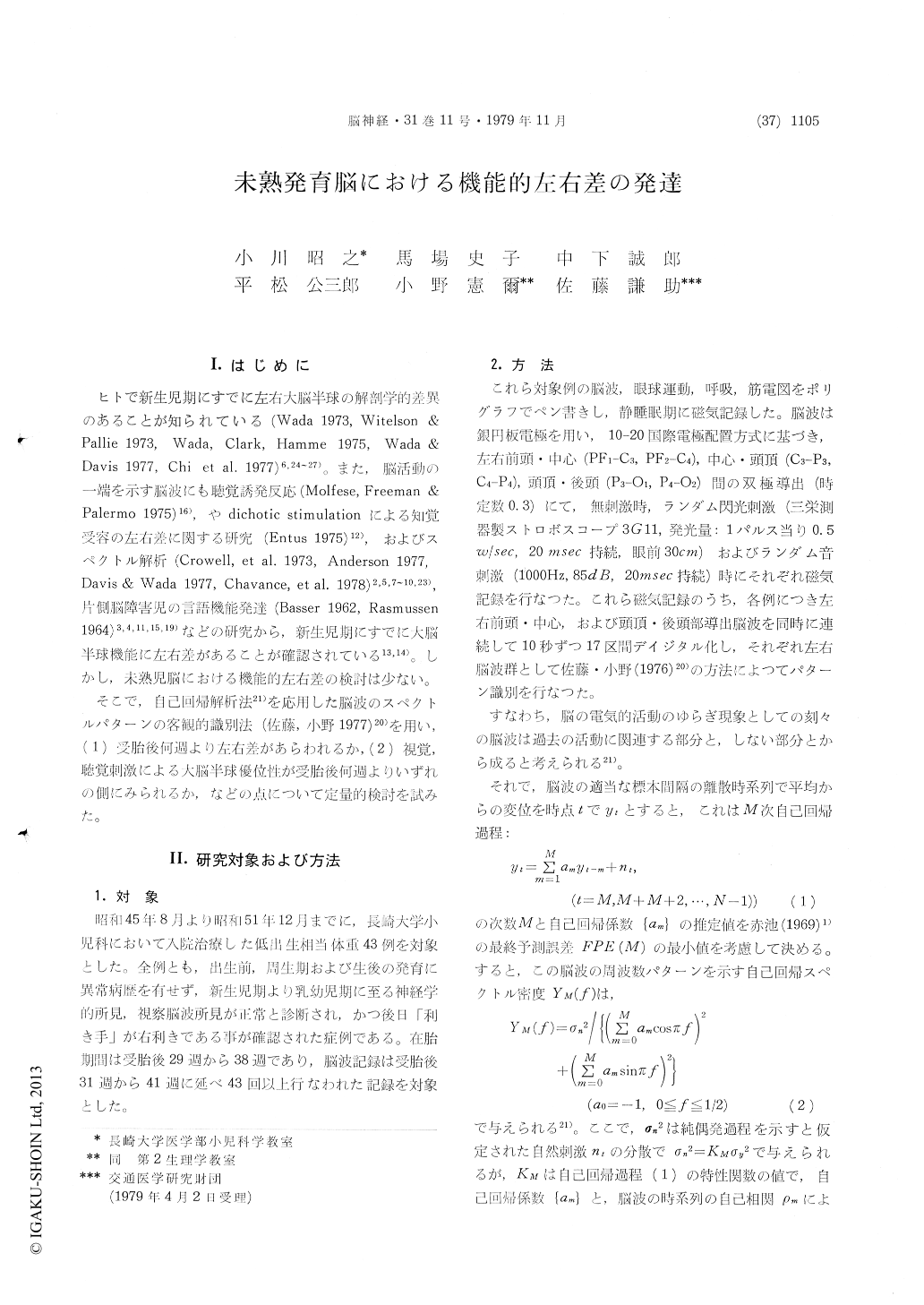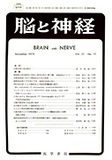Japanese
English
- 有料閲覧
- Abstract 文献概要
- 1ページ目 Look Inside
I.はじめに
ヒトで新生児期にすでに左右大脳半球の解剖学的差異のあろことが知られている(Wada 1973, Witelson & Pallie 1973, Wada, Clark, Hamme 1975, Wada & Davis 1977, Chi et al.1977)6,24〜27)。また,脳活動の一端を示す脳波にも聴覚誘発反応(Molfese, Freeman & Palermo 1975)16),やdichotic stimulationによる知覚受容の左右差に関する研究(Entus 1975)12),およびスペクトル解析(Crowell, et al.1973, Anderson 1977, Davis & Wada 1977, Chavance, et al.1978)2,5,7〜10,23),片側脳障害児の言語機能発達(Basser 1962, Rasmussen 1964)3,4,11,15,19)などの研究から,新生児期にすでに大脳半球機能に左右差があることが確認されている13,14)。しかし,未熟児脳における機能的左右差の検討は少ない。
そこで,自己同帰解析法21)を応用した脳波のスペクトルパターンの客観的識別法(佐藤,小野1977)20)を用い,(1)受胎後何週より左右差があらわれるか,(2)視覚,聴覚刺激による大脳半球優位性が受胎後何週よりいずれの側にみられるか,などの点について定量的検討を試みた。
Au toregressi ve (AR) coefficients that were obtained on EEGs showed the characteristic patternsof their autocovariance and spectra. In addition, as the distances of the AR-coefficient of an EEG or the average AR-coefficient vector of a group of EEG's from the average AR-coefficient vector of a group of standard EEG's follows a F-distri-bution, it has been possible to test statistically at a certain significance level of whether an EEG or a group belong to the standard group or not.
For the aim to know the earliest age at which the functional asymmetries of brain may be found, the pattern discrimination of EEG power spectra through AR-analysis were performed on 43 cases of preterm infants from 31 to 41 weeks of post-conceptional age. The EEG-records were obtained with polygraphy from scalp electrodes at homo-logous sites over left and right hemispheres bipolarly according to the"10-20"international system in quiet sleep stage. The data were recorded on analog tape and 17 segments of 10 second artifact free EEG were digitized at 50 samples/sec. in each subject and calculated with minicomputer 11/40 (DEC). The results were as follows:
1) From 36 weeks of postconceptional age, the left-right hemispheric asymmetries of EEGs were observed at significance level of 0.01.
2) In the processing of flash and click stimuli, those hemispheric differences were found from 33 weeks at the significance level of 0.01.
3) According to the discriminat function in equation (11), it was observed that the left and right hemispheres showed the specific characteristics from 36 weeks each other. Furthermore, 24% cases of the right occipital EEG shifted to the characteristics of left hemiphere for flash stimuli, while 30% cases of the left temporal EEGs to the right for clicks. Consequently, the click stimuli would tent to be processed within the left hemi-sphrer, while the random flashes tend to be within the right.
4) The above results show that some functional asymmetries may already be present in the normal human brain at 36 weeks of postconceptional age and suggest that the newborn infant is born with a preprogrammed biological capacity to process the auditory and visual information in left and right hemipheres each other.

Copyright © 1979, Igaku-Shoin Ltd. All rights reserved.


